Cardiff University medical students gained a real-life multi-agency extrication experience with South Wales Fire and Rescue Service (SWFRS)
SWFRS hosted over 400 students alongside South Wales Police, Welsh Ambulance Service, and MEDSERVE in a complex joint training exercise Cardiff Gate Training Centre.
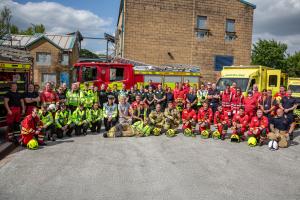
The event featured four simulated road traffic collision (RTC) scenarios designed to give students an insight into emergency response before casualties arrive at hospital.
Now in its fifth year, this annual exercise is led by Dr. Tim Johnson and his team from Cardiff University’s School of Medicine, in collaboration with Group Manager Roger Magan and Watch Manager Richie Matthews from SWFRS Training and Development Department. Alongside Dr. Beth Barton, a consultant in Intensive Care Medicine and Pre-Hospital Emergency Medicine, and On-call Firefighter for SWFRS.
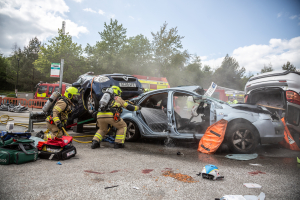
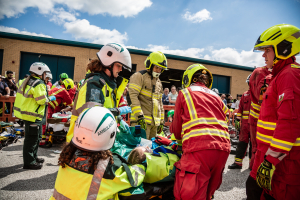
Watch Manager Richie Matthews highlighted the exercise’s importance:
“The collaboration between SWFRS and Cardiff University has grown into a first-class training experience, endorsed by the British Medical Council and United Kingdom Rescue Organisation.
It allows students to observe and participate in realistic incident responses, helping them understand the multi-agency approaches used at the roadside to safely extricate casualties.”
Dr Tim Johnson plays a crucial role in bringing together the various agencies and overseeing the students’ training during the practical element of their studies.
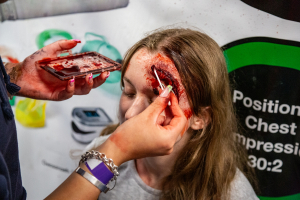
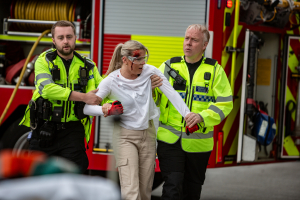
Dr Tim Johnson added:
“It is great to know that close to 2000 doctors who have or will graduate as doctors from Cardiff University will have had the opportunity to experience the multiagency skills that maximise casualty care at the roadside and beyond.
We hope that inspires many of them to consider a career in emergency medicine and at least provide them with confidence to avoid being the ‘passive bystander’ if confronted with a traumatic incident in the prehospital setting.”
The scenarios, developed by Dr Beth Barton, were challenging and relevant for all agencies involved, including a pregnant woman trapped in a vehicle requiring an on-site caesarean and a passenger needing amputation from an electric vehicle.
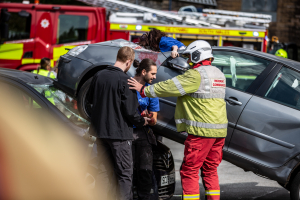
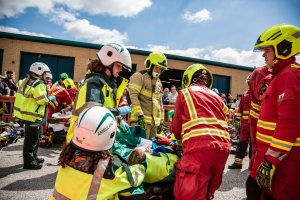
The exercise also reflects evolving rescue techniques, to prioritise rapid casualty removal over older and slower spinal stabilisation methods. The exercise reinforces the benefits of coordinated multi-agency working to reduce extrication times and improve patient outcomes.
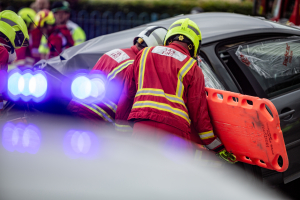
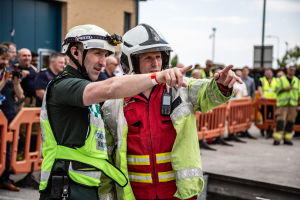
CM George Fisher, Joint Fire Control, simulated communication from the control room’s perspective, highlighting the importance of accurate and timely information gathering in emergency mobilisation.
Chief Drone Operator, Kev Dite, offered a live aerial view of the exercise. This year’s use of drone technology demonstrated potential for real-time incident streaming to control units, enhancing situational awareness.
SM Jon Holmes led a post-scenario debrief following each simulation, to review learning points and identify improvements from each agency involved, including feedback from the medical students who volunteered as ‘casualties.’
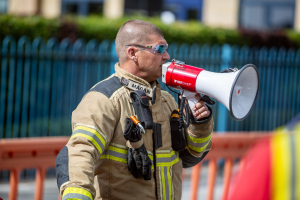
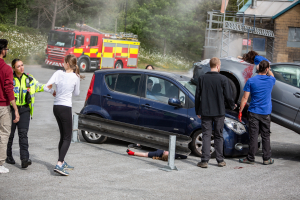
Richie added:
“Feedback from previous participants has shown that this training directly benefits students when they encounter real incidents. By working together and embedding JESIP principles, the emergency services in South Wales continue to improve their multi-agency response. Every Cardiff medical graduate now gains this vital experience.”
The exercise serves as a powerful reminder of the value in multi-agency collaboration and training, helping to prepare both current and future responders for the challenges of road traffic collisions.